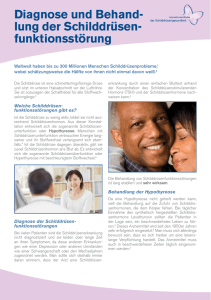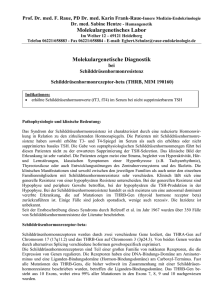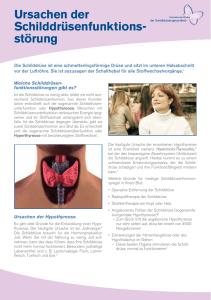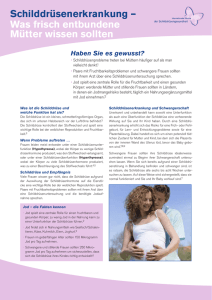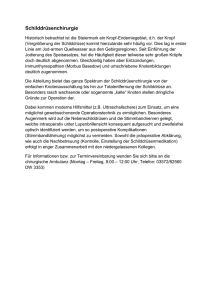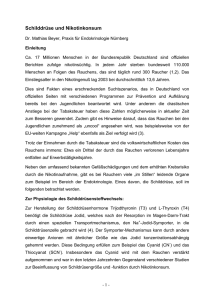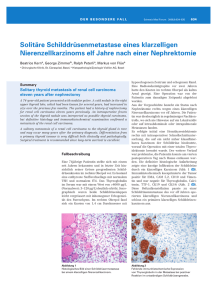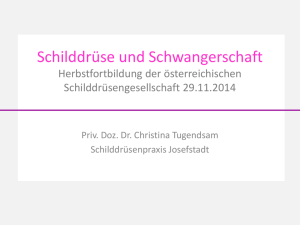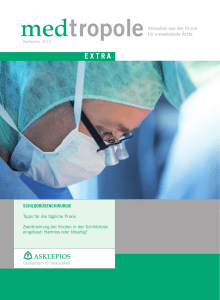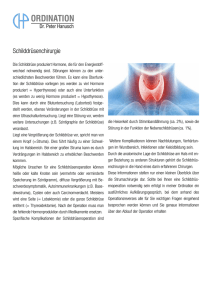thyroid
Werbung
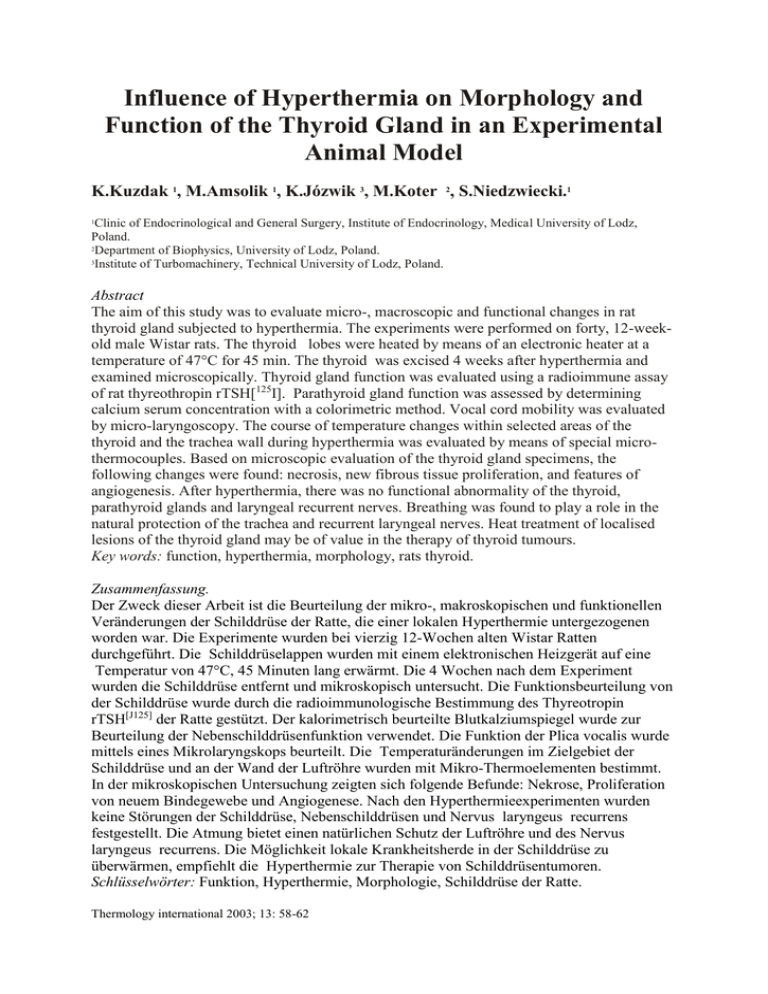
Influence of Hyperthermia on Morphology and Function of the Thyroid Gland in an Experimental Animal Model K.Kuzdak 1, M.Amsolik 1, K.Józwik 3, M.Koter 2, S.Niedzwiecki.1 Clinic of Endocrinological and General Surgery, Institute of Endocrinology, Medical University of Lodz, Poland. 2Department of Biophysics, University of Lodz, Poland. 3Institute of Turbomachinery, Technical University of Lodz, Poland. 1 Abstract The aim of this study was to evaluate micro-, macroscopic and functional changes in rat thyroid gland subjected to hyperthermia. The experiments were performed on forty, 12-weekold male Wistar rats. The thyroid lobes were heated by means of an electronic heater at a temperature of 47°C for 45 min. The thyroid was excised 4 weeks after hyperthermia and examined microscopically. Thyroid gland function was evaluated using a radioimmune assay of rat thyreothropin rTSH[125I]. Parathyroid gland function was assessed by determining calcium serum concentration with a colorimetric method. Vocal cord mobility was evaluated by micro-laryngoscopy. The course of temperature changes within selected areas of the thyroid and the trachea wall during hyperthermia was evaluated by means of special microthermocouples. Based on microscopic evaluation of the thyroid gland specimens, the following changes were found: necrosis, new fibrous tissue proliferation, and features of angiogenesis. After hyperthermia, there was no functional abnormality of the thyroid, parathyroid glands and laryngeal recurrent nerves. Breathing was found to play a role in the natural protection of the trachea and recurrent laryngeal nerves. Heat treatment of localised lesions of the thyroid gland may be of value in the therapy of thyroid tumours. Key words: function, hyperthermia, morphology, rats thyroid. Zusammenfassung. Der Zweck dieser Arbeit ist die Beurteilung der mikro-, makroskopischen und funktionellen Veränderungen der Schilddrüse der Ratte, die einer lokalen Hyperthermie untergezogenen worden war. Die Experimente wurden bei vierzig 12-Wochen alten Wistar Ratten durchgeführt. Die Schilddrüselappen wurden mit einem elektronischen Heizgerät auf eine Temperatur von 47°C, 45 Minuten lang erwärmt. Die 4 Wochen nach dem Experiment wurden die Schilddrüse entfernt und mikroskopisch untersucht. Die Funktionsbeurteilung von der Schilddrüse wurde durch die radioimmunologische Bestimmung des Thyreotropin rTSH[J125] der Ratte gestützt. Der kalorimetrisch beurteilte Blutkalziumspiegel wurde zur Beurteilung der Nebenschilddrüsenfunktion verwendet. Die Funktion der Plica vocalis wurde mittels eines Mikrolaryngskops beurteilt. Die Temperaturänderungen im Zielgebiet der Schilddrüse und an der Wand der Luftröhre wurden mit Mikro-Thermoelementen bestimmt. In der mikroskopischen Untersuchung zeigten sich folgende Befunde: Nekrose, Proliferation von neuem Bindegewebe und Angiogenese. Nach den Hyperthermieexperimenten wurden keine Störungen der Schilddrüse, Nebenschilddrüsen und Nervus laryngeus recurrens festgestellt. Die Atmung bietet einen natürlichen Schutz der Luftröhre und des Nervus laryngeus recurrens. Die Möglichkeit lokale Krankheitsherde in der Schilddrüse zu überwärmen, empfiehlt die Hyperthermie zur Therapie von Schilddrüsentumoren. Schlüsselwörter: Funktion, Hyperthermie, Morphologie, Schilddrüse der Ratte. Thermology international 2003; 13: 58-62
